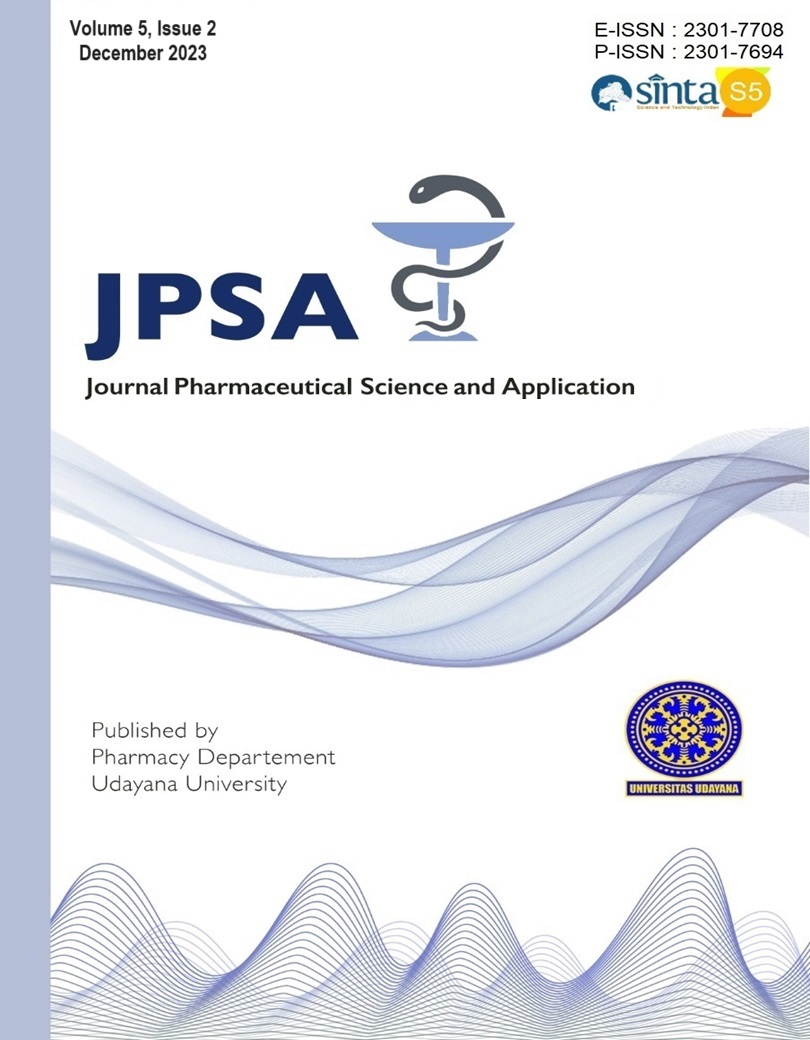THE EFFECT OF VARIOUS LOCATION AND SOLVENT TO SAMBILOTO (Andrographis paniculata (Burm.f.) Nees) PHYTOCHEMICAL PROFILES
Abstract
Background: Sambiloto (Andrographis paniculata (Burm.f.) Nees) is one of the traditional medicines that contain multiple phytochemical compounds. Phytochemical compounds can be influenced by growing location. Every location has its characteristic that affects the metabolic process of phytochemical compounds. Apart from that, the extraction solvent also plays an essential role in attracting compounds in sambiloto. The solvent is related to the polarity and can affect the phytochemical profile. Objective: This research aims to determine the effect of the growing location and extraction solvent of sambiloto on its phytochemical profile. Methods: Sambiloto from Denpasar (Dps), Sukoharjo (Skj), and Sleman (Slm) was extracted (1:10 w/v) using ultrasonic-assisted extraction in methanol 100% (MeOH100) and methanol 50% (MeOH50). In water solvents, extraction is carried out using the infusion method. Fingerprint analysis using HPTLC-Densitometry. The data obtained was analyzed further using principal component analysis (PCA). Results: Fingerprint analysis obtained peak data that varied in each extraction solvent. There are four major peaks in the chromatogram profile of each solvent. The peak chromatogram for each solvent also shows differences at each location. PCA analysis shows that the phytochemical content of sambiloto extract is divided into three main clusters. The distribution of the clusters is based on variations in the extraction solvent. Variations in growing location for each sambiloto also influence its phytochemical profile. However, these variations are still in the same quadrant for each solvent. Conclusion: The solvent determines more variations in the phytochemical profile of sambiloto extract than the growing location.
Keywords: Sambiloto; Solvent; Location; Phytochemical; Principal Component Analysis
Downloads

This work is licensed under a Creative Commons Attribution 4.0 International License.
Authors who publish with this journal agree to the following terms:
Authors retain copyright and grant the journal right of first publication with the work simultaneously licensed under a Creative Commons Attribution License that allows others to share the work with an acknowledgment of the work's authorship and initial publication in this journal.
Authors are able to enter into separate, additional contractual arrangements for the non-exclusive distribution of the journal's published version of the work (e.g., post it to an institutional repository or publish it in a book), with an acknowledgment of its initial publication in this journal.
Authors are permitted and encouraged to post their work online (e.g., in institutional repositories or on their website) prior to and during the submission process, as it can lead to productive exchanges, as well as earlier and greater citation of published work. (See The Effect of Open Access).

This work is licensed under a Creative Commons Attribution 4.0 International License.


 HOME
HOME
















